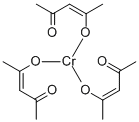Human Menopausal Gonadotrophin
Synonym(s):HMG
- CAS NO.:61489-71-2
- Empirical Formula: C9H18O
- Molecular Weight: 142.23862
- MDL number: MFCD00131230
- EINECS: 489-171-2
- SAFETY DATA SHEET (SDS)
- Update Date: 2024-12-20 11:34:09

What is Human Menopausal Gonadotrophin?
The Uses of Human Menopausal Gonadotrophin
Gonad-stimulating principle.
The Uses of Human Menopausal Gonadotrophin
Gonadotropin from human menopausal urine has been used as a supplement in pre-incubated maturation medium for the culture of bovine cumulus oocyte complexes (COCs) to study the effects of multiple freeze-thawing of bovine epididymal sperm on in vitro development of embryo.
brand name
Humegon (Organon); Pergonal (Serono).
General Description
Pituitary hormones prepared from the urine of postmenopausalwomen whose ovarian tissue does not respondto gonadotropin are available for medicinal use as theproduct menotropins (Pergonal). The latter has FSH andLH gonadotropin activity in a 1:1 ratio. Menotropins areuseful in the treatment of anovular women whose ovariesrespond to pituitary gonadotropins but who have a gonadotropindeficiency caused by either pituitary or hypothalamusmalfunction. Usually, menotropins are administeredintramuscularly in an initial dose of 75 IU of FSHand 75 IU of LH daily for 9 to 12 days, followed by 10,000IU of chorionic gonadotropin 1 day after the last dose ofmenotropins.
Biochem/physiol Actions
Gonadotropin interacts with members of the GPCR (G-protein coupled receptor family), and upon activation they induce adenylyl cyclase. This hormone is synthesized in male reproductive tract and has high concentration in semen, especially the a subunit. This subunit is linked with spermatogenesis, and lower levels are present in males with aberrant semen quality.
Mechanism of action
Human menopausal gonadotropin (HMG), which contains follicle-stimulating hormone (FSH) and luteinizing hormone (LH), can secrete gonadotropin to promote follicle maturation to stimulate ovulation and accelerate the development of corpus luteum.HMG is derived from the urine of postmenopausal women[1].
Clinical Use
Menotropins are a natural product that is obtained from the urine of postmenopausal women and then biologically standardized (international units [IU]) for FSH and LH activities in an approximate ratio of 1:1. Menotropins are used in males with primary (hypothalamic) or secondary (pituitary) hypogonadism to stimulate spermatogenesis, providing they have been treated previously with human chorionic gonadotropin (hCG; a peptide hormone of placental origin that has activity very similar to LH) to effect masculinization (increased testosterone inducing ovulation in women who are having difficulty ovulating as a result of either hypothalamic or pituitary hormonal dysfunction. The menotropins are given for 7 to 12 days, and after clinical evaluation (via ultrasound) indicates the presence of a mature follicle, a single dose of hCG is given to simulate the typical LH surge that normally triggers ovulation. Also, women use the combination of menotropins and hCG to promote the development of multiple follicles when they are participating in an IVF program requiring the recruitment of follicles.
Side Effects
Side effects: Headache, mild stomach pain/bloating, redness/pain at the injection site, breast tenderness, or dizziness may occur.
Serious side effects, including: vaginal bleeding, flu-like symptoms (such as fever, chills, joint pain, muscle ache, tiredness).
References
[1] Shaoquan Shi. “Letrozole and human menopausal gonadotropin for ovulation induction in clomiphene resistance polycystic ovary syndrome patients: A randomized controlled study.” Medicine (2020): e18383.
Properties of Human Menopausal Gonadotrophin
| storage temp. | 2-8°C |
| InChI | InChI=1S/C9H18O/c1-9(2,3)7-5-4-6-8-10/h8H,4-7H2,1-3H3 |
| CAS DataBase Reference | 61489-71-2(CAS DataBase Reference) |
| EPA Substance Registry System | Menotropins (61489-71-2) |
Safety information for Human Menopausal Gonadotrophin
Computed Descriptors for Human Menopausal Gonadotrophin
| InChIKey | CBUWTGCATVNMJE-UHFFFAOYSA-N |
| SMILES | C(=O)CCCCC(C)(C)C |
New Products
Tert-butyl bis(2-chloroethyl)carbamate (S)-3-Aminobutanenitrile hydrochloride N-Boc-D-alaninol N-BOC-D/L-ALANINOL 3-Morpholino-1-(4-nitrophenyl)-5,6-dihydropyridin- 2(1H)-one N-octanoyl benzotriazole 3,4-Dibenzyloxybenzaldehyde Electrolytic Iron Powder 1,1’-CARBONYLDIIMIDAZOLE R-2-BENZYLOXY PROPIONIC ACID 1,1’-CARBONYLDI (1,2-4 TRIAZOLE) 4-HYDROXY BENZYL ALCOHOL 3-NITRO-2-METHYL ANILINE (2-Hydroxyphenyl)acetonitrile 4-Bromopyrazole 5-BROMO-2CYANO PYRIDINE 5,6-Dimethoxyindanone 5-broMo-2-chloro-N-cyclopentylpyriMidin-4-aMine 2-(Cyanocyclohexyl)acetic acid 4-methoxy-3,5-dinitropyridine 2-aminopropyl benzoate hydrochloride 1-(4-(aminomethyl)benzyl)urea hydrochloride tert-butyl 4- (ureidomethyl)benzylcarbamate diethyl 2-(2-((tertbutoxycarbonyl)amino) ethyl)malonateRelated products of tetrahydrofuran








You may like
-
 N-Vinylformamide 99%View Details
N-Vinylformamide 99%View Details
13162-05-5 -
 Chloro Uracil 1820-81-1 99%View Details
Chloro Uracil 1820-81-1 99%View Details
1820-81-1 -
 2-ethyl-6-methyl-3-hydroxypyridine succinate 99%View Details
2-ethyl-6-methyl-3-hydroxypyridine succinate 99%View Details
127464-43-1 -
 2-ETHYLPYRIDINE 100-71-0 99%View Details
2-ETHYLPYRIDINE 100-71-0 99%View Details
100-71-0 -
 7439-89-6 Electrolytic Iron Flakes 99.9% MaxView Details
7439-89-6 Electrolytic Iron Flakes 99.9% MaxView Details
7439-89-6 -
 7439-89-6 98.0% MinView Details
7439-89-6 98.0% MinView Details
7439-89-6 -
 Reduced Iron Powder 99.8% MaxView Details
Reduced Iron Powder 99.8% MaxView Details
7439-89-6 -
 Electrolytic Iron Powder 7439-89-6 99.8% MaxView Details
Electrolytic Iron Powder 7439-89-6 99.8% MaxView Details
7439-89-6